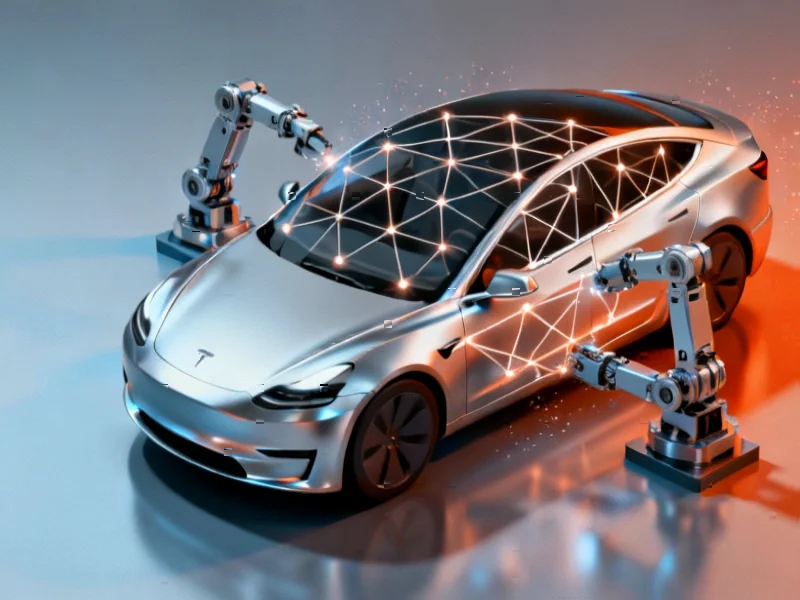According to Forbes, OpenAI’s Sora 2 achieved one million downloads within five days of its launch, demonstrating massive consumer interest in AI video generation. The technology enables prompt-to-video creation where users describe scenes through text to generate complete videos with visuals, sound, and animation. Brands like Toys”R”Us have already embraced the technology, creating a fully synthetic animated film that premiered at Cannes Lions 2024. Meanwhile, platforms including YouTube and Google are integrating AI video tools, with Google embedding ads alongside AI-generated summaries and shopping ads. The rapid adoption signals both transformative potential and significant challenges ahead for creative industries and society.
The Double-Edged Sword of Creative Disruption
The speed at which AI video generation is being adopted represents one of the fastest technological transformations in creative history. Unlike previous disruptions that took years to permeate industries, AI video tools are achieving mass adoption in days, not years. This acceleration creates a dangerous gap between technological capability and societal readiness. Creative professionals who spent decades mastering their craft now face obsolescence at unprecedented speed, while platforms scramble to monetize technology they barely understand.
What’s particularly concerning is the economic incentive structure developing around what critics term “AI slop.” When platforms reward volume over quality, and when creators from developing countries can produce content targeting wealthier markets at minimal cost, we create a race to the bottom that devalues human creativity. This isn’t just about job displacement—it’s about the systematic devaluation of artistic expression itself. The Taylor Swift fan backlash against AI-generated promotional content demonstrates that audiences can detect and reject synthetic creativity, even when it’s technically proficient.
The Illusion of Understanding
While Google DeepMind’s research suggests AI video models demonstrate “generalized vision understanding,” this claim deserves serious scrutiny. These systems excel at pattern recognition but lack true causal understanding. They can generate convincing surveillance footage of Sam Altman stealing graphics cards precisely because they’ve seen enough patterns to mimic reality without comprehending the underlying physics, ethics, or consequences.
The zero-shot learning capabilities touted by researchers represent statistical interpolation rather than genuine understanding. When these systems generate medical education videos or simulate engineering scenarios, they’re essentially sophisticated pattern matchers working without the contextual awareness that human experts bring. In safety-critical applications like healthcare or autonomous vehicle simulation, this pattern-based approach could have catastrophic consequences if deployed without rigorous validation.
The Governance Vacuum
Perhaps the most alarming aspect of the AI video revolution is the complete absence of effective governance frameworks. Current proposals for watermarking and metadata tracking are easily circumvented, and the fundamental challenge remains: how do we distinguish synthetic from authentic content at scale? The same technology that can personalize patient education materials can also generate emotionally manipulative political propaganda indistinguishable from reality.
The representation bias problem presents another governance nightmare. While theoretically, AI can generate content for underrepresented groups, in practice, these systems often reinforce stereotypes through what I call “synthetic stereotyping”—creating technically diverse but culturally shallow representations that lack the nuance of lived experience. The solution isn’t simply generating more synthetic data, but fundamentally rethinking how we build and audit these systems.
The Coming Market Correction
History suggests we’re in the peak of the AI video hype cycle. Similar patterns emerged with previous technological disruptions—initial euphoria followed by market saturation, quality concerns, and eventual consolidation. The current gold rush mentality, where every platform races to integrate AI video capabilities, will likely give way to a more measured approach as the limitations become apparent.
The most sustainable applications won’t be in replacing human creativity entirely, but in augmenting it. The healthcare and education use cases highlighted have genuine potential, but only as tools in human-led processes, not as autonomous content generators. The companies that succeed long-term will be those that recognize AI video as a collaborative tool rather than a replacement for human expertise and creativity.
The fundamental question isn’t whether AI video technology will advance, but whether we can develop the wisdom to deploy it responsibly. We’re building systems that could either democratize creativity or devalue it entirely, and the window for making that choice is closing rapidly.




